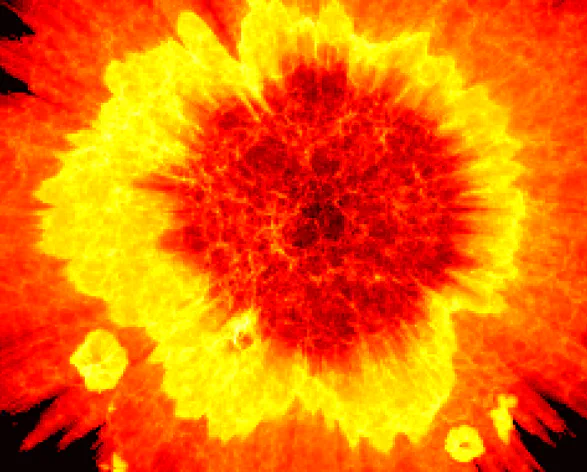Reionization of the Universe
 Image credit: Khullar et al (2020)
Image credit: Khullar et al (2020)In the past, I’ve been interested in understanding He re-ionization. Under the supervision of Prof. Benedetta Ciardi (MPA, Garching), I looked at the hyperfine transition of 3He+ as a probe of the high-z universe. The hyperfine transition of 3He+ at 3.5 cm has been thought as a probe of the high-z IGM since it offers a unique insight into the evolution of the helium component of the gas, as well as potentially give an independent constraint on the 21 cm signal from neutral hydrogen. In Khullar et al (2020), we use radiative transfer simulations of reionization driven by sources such as stars, X-ray binaries, accreting black holes and shock heated interstellar medium, and simulations of a high-z quasar to characterize the signal and analyze its prospects of detection. We find that the peak of the signal lies in the range ∼ 1 − 50 μK for both environments, but while around the quasar it is always inemission, in the case of cosmic reionization a brief period of absorption is expected. As the evolution of HeII is determined by stars, we find that it is not possible to distinguish reionization histories driven by more energetic sources. On the other hand, while a bright QSO produces a signal in 21 cm that is very similar to the one from a large collection of galaxies, its signature in 3.5 cm is very peculiar and could be a powerful probe to identify the presence of the QSO. We analyze the prospects of the signal’s detectability using SKA1-mid as our reference telescope. We find that the noise power spectrum dominates over the power spectrum of the signal, although the S/N ratio can be appreciable when the wavenumber bin width and the survey volume are sufficiently large.
I also spent the summer of 2017 exploring the application of granulometry to understand the morphology of HII bubbles during the epoch of reionization. This project was done under the supervision of Prof. Tirthankar Roy Choudhuri (NCRA, Pune). Granulometry is a technique in mathematical morphology which can be used detect structures of various sizes in binary images.